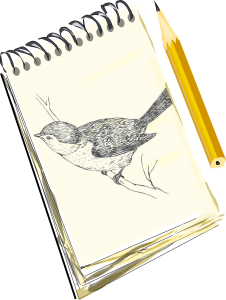
How to Combat “I’m Bored” When Hiking With Kids
We are all used to traveling to get to a destination. It is a change of mindset to think of the journey as the destination. Though toddlers are especially good at rambling, this idea of walking to get to a place is instilled in our children fairly quickly and as they get older, kids tend to look past the now as evidenced by the popular question “Are we there yet?” They have learned that there are schedules to meet and they must learn to hurry up and get moving, so that we can reach our destination in time.
Hiking doesn’t always have a destination. Sure, you may be hiking to a waterfall or a picturesque overlook, but many times, hiking is simply a walk in nature. Children new to hiking may find this boring and want to get back to their electronic entertainment. Here are some ways to engage them in the hike.
Alphabet Hike
Challenge them to search for each letter, consecutively. This can be in the form of an item that starts with the letter or finding the letter itself, in nature. Tree branches curve and break, forming patterns above them. Leaves, especially in the fall, may have patterns that resemble letters. If you are creative enough, you may even see letters in wildlife, in the curve of a leg for example. Besides giving them something to do, it also encourages them to pay attention to their surroundings.
Sensory Hike

Encourage your child to use his or her senses to see how many things can be observed. Make a section of hike silent to better hear the sounds of nature (being quiet may also enable you to see more wildlife as they will not be frightened off as easily). Breathe in the air and see if it smells different than at home. Can you identify where the smell is coming from? You can add touch, but remind children that some plants can cause an itchy reaction, so they should choose carefully. (This could be a time to add a lesson about plants such as poison ivy.) While taste could be an interesting as well, this is not advised unless you know for certain what you are tasting and that it is not toxic.
Identification Hike
You can focus on trees, birds, flowers, whatever seems to be in abundance in your hiking location. There are many good guide books that can help in your identification. If you don’t have or don’t want to carry a book, you can take pictures and research at home or the library later.
Scavenger Hunt
Do some research about where you plan to hike to get an idea of what things you are likely to see. Make a list of things for your child to find. Add some creative ideas to make it more interesting (such as a tree hugging another or a rock that resembles a face). If you have children of varying ages, you can also adjust the difficulty so that older kids are still challenged and engaged. Keeping Leave No Trace principles in mind, simply check off that these items were found or take pictures; leave things found in nature as they are.
Artist Hike
Bring along a sketchpad or notebook and pencils, crayons or markers. Find a comfortable spot to stop for a break and draw something interesting. You can also make it more challenging by sitting back to back with your child and describe what you see while he or she draws what you describe. These pictures can also be a lasting memento of your journey.
When hiking with kids, remember to take frequent breaks for water and maybe a snack. Let them set the pace and emphasize the fun factor. Point out the blazes on the trail and explain that we use those to determine which way to go (my three-year-old loved being in charge of looking for these signs). You can also bring along binoculars or magnifying glasses to examine nature in more detail. Make sure any trash from your snack gets packed up to take home (or to the trashcan in the parking lot). You might also be a good nature citizen and pick up any trash or non-natural objects you find on the trail for disposal (pack a plastic bag for this).



One Comment
Brittany
These are so great ideas! Thanks for sharing!